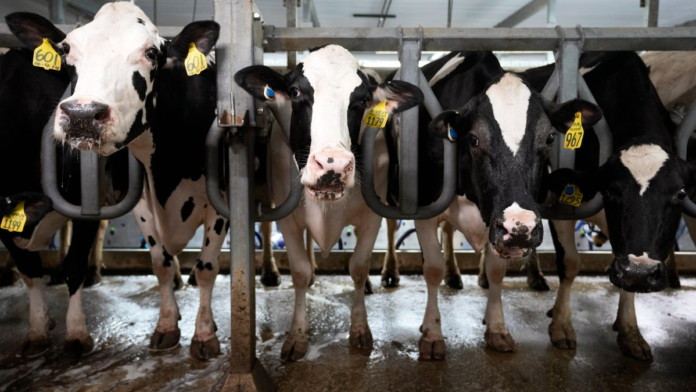Alarming heat and humidity killed hundreds of cows in Iowa last month. These losses have further decreased the size of the overall U.S. cattle herd, which has shrunk to a more than 50-year low. The Department of Natural Resources in Iowa told Reuters that it had received a much higher than normal number of body disposal requests, including one on July 31 “to dispose of approximately 370 cows that died due to heat in western Iowa recently.”
The cattle deaths were tragic, but sadly not surprising—July was an especially hot month everywhere. A bout 80% of the world’s population experienced temperatures that wouldn’t have been possible without the climate crisis. Much of the U.S., boiled under a series of consecutive heat waves, particularly Arizona . Iowa experienced multiple bouts of alarmingly hot weather. Counties throughout the state saw heat advisories in late July after heat and humidity rose heat indices higher than 100 degrees Fahrenheit (37.7 Celsius), according to the Des Moines NWS station. The average global temperature reached new heights then broke its own record the following day in early July.
Advertisement
Larger, heavier cows—are around 1,000 pounds—are more likely to die from heat stress. Even still, July’s heat reached such extremes that even lighter cattle—roughly 700 pounds—were also growing sick and dying. Workers also reported concerning cow deaths in nearby Nebraska and Kansas last month too, though agriculture agencies’ exact tallies have yet to come in.
Climate is a major part of the concern, but so is the potential impact of these deaths on the regional agricultural industry. Over 26 ,000 jobs in the state depend on cattle, according to 2021 data from the Iowa Beef Industry Council.
Advertisement Advertisement
Extreme heat was the culprit behind other cattle death events last year, too. Last June, when the temperatures rose above 100 degrees Fahrenheit (37 Celsius) in Kansas, thousands of cows died. A spokesperson from the Kansas Department of Health and Environment said that the agency had received more than 2,000 reports of cattle deaths on just two days— June 11 to June 12, 2022.
The extreme conditions from the climate crisis have challenged many sectors of agriculture in the United States. Last year, widespread drought significantly lowered the quality of corn last year, but especially in Texas. Last year’s drought also significantly lowered water levels along the Mississippi River , disrupting agricultural shipments up the valley, including fertilizer. 2023 hasn’t been spared either. A series of atmospheric rivers that brought winter storm after winter storm to California earlier this year. The consecutive storms that brought heavy rainfall, flooding, and widespread outages to counties throughout much of the state. The extreme weather cost field laborers and other agricultural employees weeks worth of work and dampened the yields of crops across the state.
Advertisement
Want more climate and environment stories? Check out Earther’s guides to decarbonizing your home, divesting from fossil fuels, packing a disaster go bag, and overcoming climate dread. And don’t miss our coverage of the latest IPCC climate report, the future of carbon dioxide removal, and the invasive plants you should rip to shreds.




